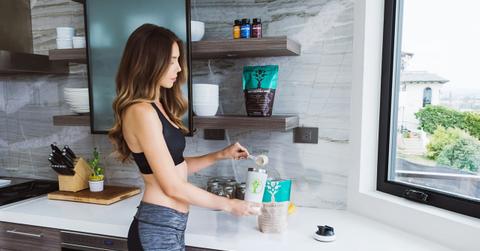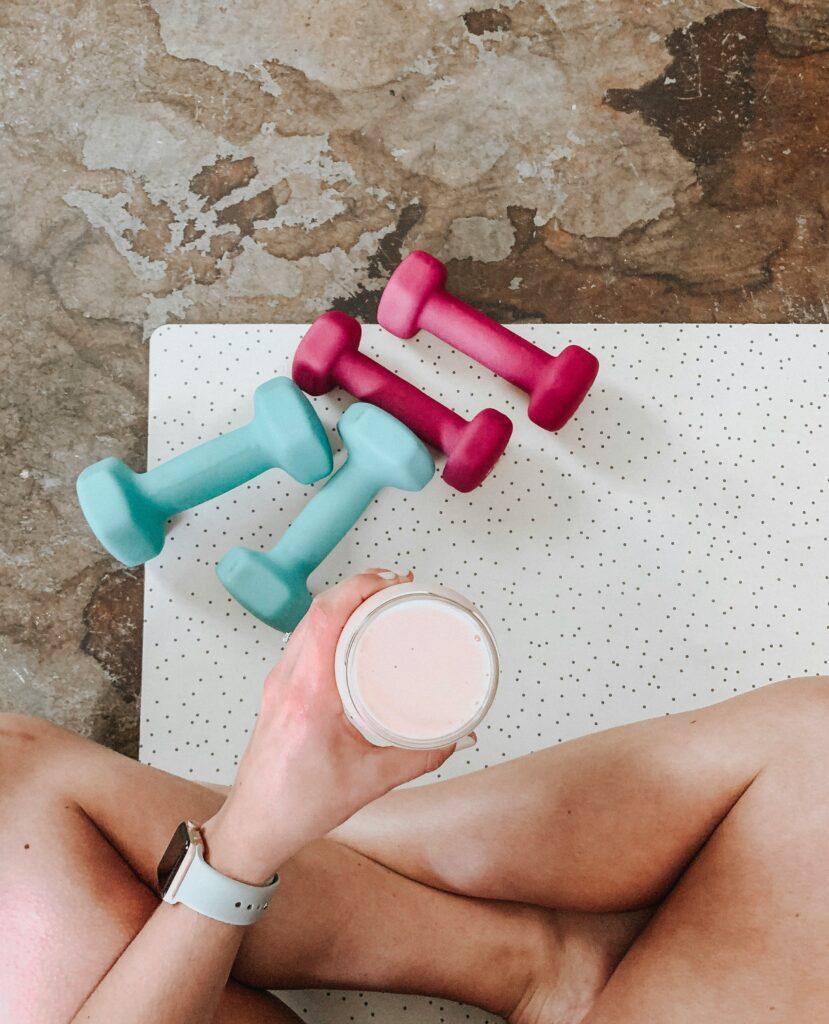How To Properly Fuel Yourself Before, During And After A Workout

Proper nutrition around your workouts isn’t just about eating at random times; it’s about strategically fueling your body to enhance performance, endurance, and recovery. Whether you’re lifting weights, running intervals, or engaging in Pilates, the right nutrients at the right times can make a significant difference.
Here are five expert-backed tips, plus real-life examples to help you fuel smarter every step of the way.
1. Understand What ‘Fueling’ Actually Means
According to University of Maryland Medical System, fueling your body refers to providing it with the nutrients it needs to function optimally during physical activity. This includes carbohydrates for quick energy, protein for muscle support, fats for endurance, and fluids for hydration.
What does this look like in practice: Instead of skipping breakfast before a morning workout, you eat a banana with almond butter 30 minutes beforehand, giving your body quick energy and preventing lightheadedness.
Nancy Clark, a registered dietitian and author of “Nancy Clark’s Sports Nutrition Guidebook,” notes that “food is fuel, and your body performs better when it’s well-fed.”
Skipping meals or under-eating before exercise can lead to dizziness, cramping, and poor performance.

2. Eat the Right Foods Before Your Workout
The key to a good workout starts with what’s on your plate (or in your shaker bottle) beforehand. Ideally, you should eat a light meal or snack one to three hours before exercising. Aim for something easy to digest, moderate in carbs, and low in fat and fiber to avoid discomfort.
What does this look like in practice: You eat oatmeal with berries and a scoop of Greek yogurt two hours before an afternoon cycling class to give you sustained energy without feeling too full.
Registered dietitian Abby Sharp of “Abbey’s Kitchen” recommends a slice of toast with nut butter and banana or Greek yogurt with berries.
“Carbs give you the energy to push through your workout, while a bit of protein helps prep your muscles for recovery,” she wrote in one of her blog posts on workout nutrition.
For early-morning exercisers, even a small snack, like a handful of dried fruit or a granola bar, can be enough to power through.
3. Hydrate Consistently
Proper hydration starts long before your workout begins. The American College of Sports Medicine suggests drinking about 16–20 ounces of water two to three hours before exercise and sipping fluids during your workout, especially in warm or humid environments.
Water is your best workout companion. Hydrating before and during exercise supports stamina, regulates temperature, and helps prevent cramps.
What does this look like in practice: You drink a full glass of water when you wake up, sip on a water bottle during your strength training session, and then have another glass right after cooling down.
For workouts longer than an hour, or those involving heavy sweating, adding an electrolyte drink like coconut water or a low-sugar sports drink can help maintain fluid balance. Sports dietitian Kelly Jones emphasizes that sodium, potassium, and magnesium play key roles in hydration and muscle function.

4. Fuel Mid-Workout
Unless you’re engaging in high-intensity exercise lasting longer than 60 minutes, you probably don’t need mid-workout fuel. But for endurance athletes or long gym sessions, a small source of easily digestible carbs, such as a banana, energy chews, or a sports drink, can help maintain energy and focus.
What does this look like in practice: During a 90-minute hike, you pack sliced oranges and an electrolyte drink to sip on halfway through, helping you stay energized and avoid fatigue.
Gatorade’s Sports Science Institute recommends that endurance athletes consume between 30 to 90 grams of carbohydrates per hour during prolonged exercise sessions. This intake can be achieved through various carbohydrate sources, including glucose, glucose polymers, sucrose, lactose, glucose-fructose, or glucose-galactose mixes. These can be consumed in formats such as drinks, gels, or bars.
5. Refuel to Recover After Your Workout
The recovery window is real: what you eat within 30–60 minutes after a workout can significantly impact how your muscles rebuild and how quickly you bounce back for your next session.
According to a study published in the Journal of the International Society of Sports Nutrition, consuming protein and carbohydrates within 30 minutes to two hours post-exercise can enhance muscle protein synthesis and glycogen restoration, facilitating faster and more effective recovery.
Similarly, the Mayo Clinic advises that eating a meal containing both carbohydrates and protein within two hours after a workout helps muscles recover and replenish glycogen stores.
What does this look like in practice: After a morning HIIT class, you blend a smoothie with frozen berries, spinach, almond milk, and protein powder to jumpstart recovery on your commute home.
Protein is essential to muscle repair. Aim for 15–25 grams, paired with a moderate amount of carbs. Think: a smoothie with whey protein and fruit, a turkey sandwich, or tofu with rice and veggies.
Dr. Stacy Sims, exercise physiologist and author of Roar, explains that women in particular benefit from immediate post-exercise nutrition due to hormonal fluctuations that affect muscle protein synthesis.
Proper fueling isn’t just about what you eat, it’s about when and why. Hydrating well, eating the right combination of nutrients, and listening to your body can help you show up stronger and recover smarter one meal, one workout at a time.





